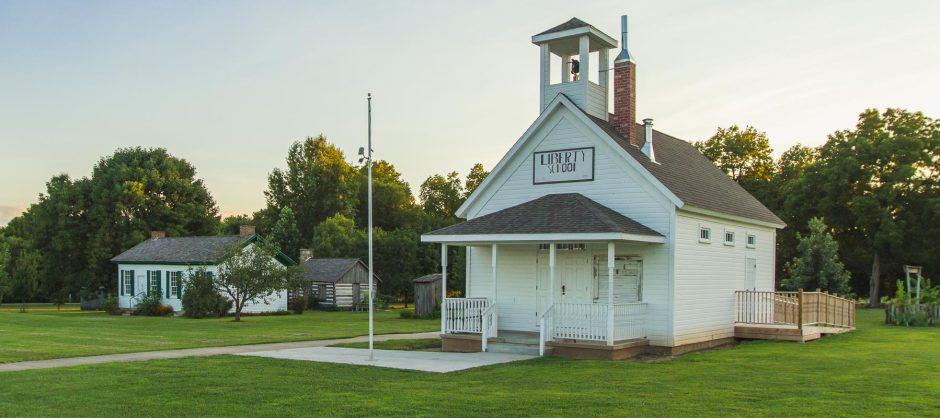
The Gray/Campbell house was built in 1856 by James Price Gray a few miles south of Springfield, MO. The original location was in the vicinity of James River Freeway and Republic Road. Due to a debt incurred by James and Jabez Owen, the sheriff seized the right and title for the property to be sold at auction. John R. Weaver (James’ brother-in-law) bought the property at auction. Thus keeping it in the family. It is believed that James and Sallie remained living there. In 1865 the house was sold to John Polk Campbell, husband of James’ younger sister Susan. The house stayed in the family until the 1950s. As progress was imminent, and room needed to be made for a new road, Kansas Expressway, the decision was made to move the historic home to Nathanael Greene Park to be part of a living history museum called the Gray/Campbell Farmstead.
It is believed that James was assisted by his father (Elijah Gray), two brothers-in-law (Lee Yarbrough and John Weaver), and three male slaves in building the house. The house was a grand Greek Rival-style two-room home, each room a mirror image of the other and both having fireplaces on the gabled ends. The house also contained limestone fireboxes, homemade bricks, and interior chimneys. Walls and ceilings were made of lath and plaster. The house included a two-room with a fireplace in possibly a kitchen, another room behind the fireplace, and a brick-walled cellar underneath. The house and the property had outbuildings, slave quarters, gardens, and orchards. By the 1980’s the house had sat unoccupied for 30 or so years. It had been used as farm storage and was in great disrepair. In 1984, most of the house was painstakingly moved about two miles to the north, but the rear porch and el were too fragile and deteriorated to save.
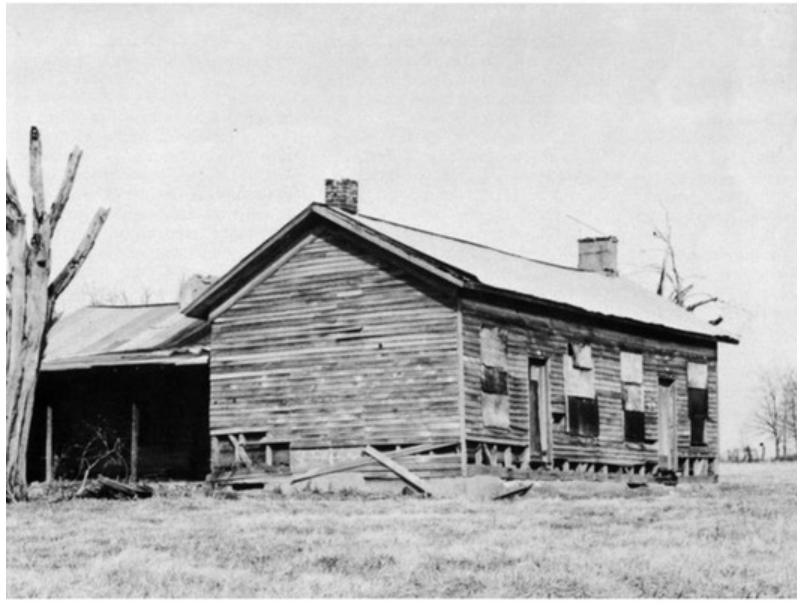
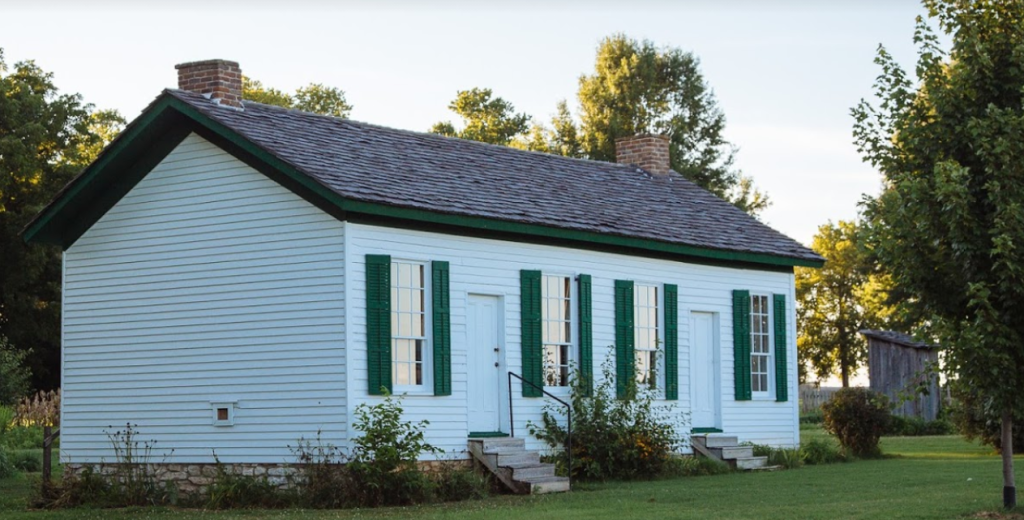
Once the house was set at its new home, the brickwork was reconstructed and the roof was replaced. The new hand-rived roof was constructed from the wood of a tree (dating from the 1860s) from another city park that was felled due to a storm that year.
Inside the House
When visiting the home, guests will see furnishings and artifacts belonging to the Gray/Campbell families and others from that time.
Living Room
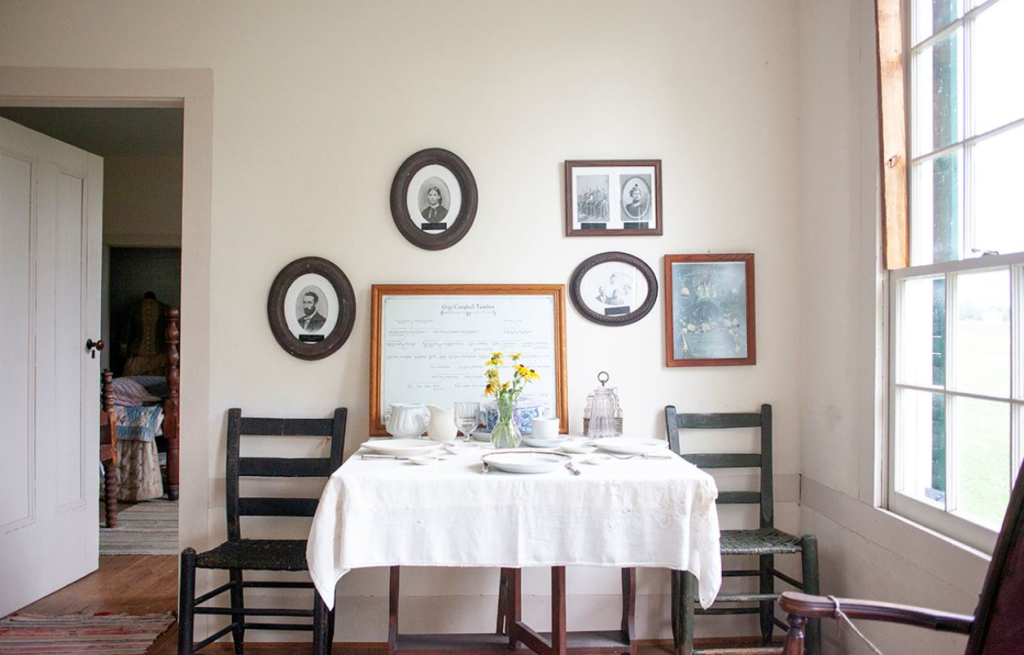
The Campbells conducted all their indoor living in this two-room house. Sleeping was designated to one room and all other activities to the other room, we will call it a living room. This room is where they ate, played, studied, worked, and enjoyed each other’s company.
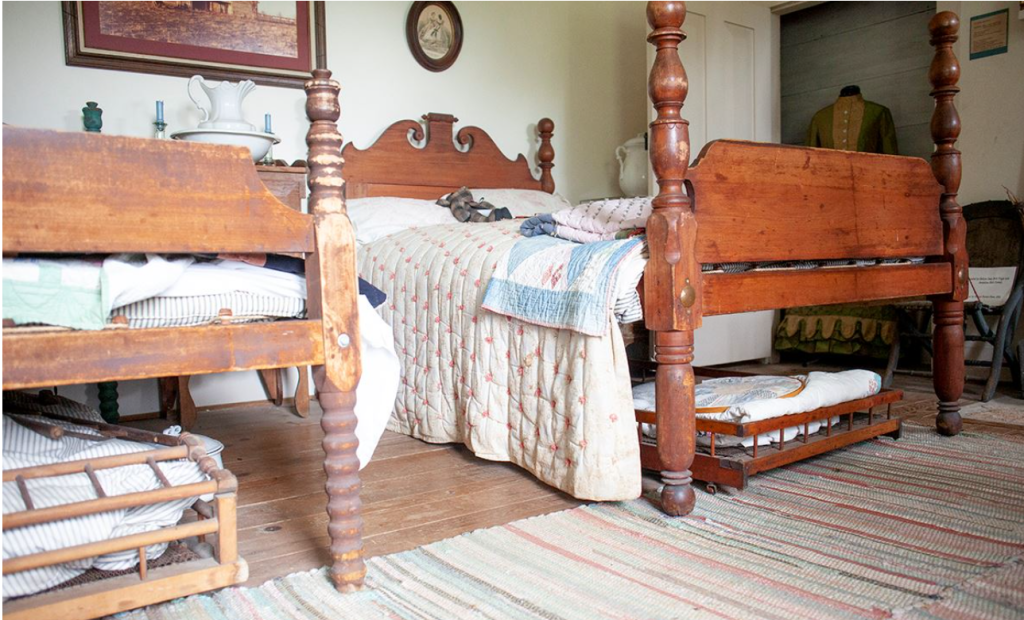
John and Susan Gray had ten children, which was great when it came time to divide up the chores. However, there needed to be a place for everyone to sleep at night and that place was in one of the two rooms in this house. Children would sleep several to a bed and they also used trundle beds and cribs. With no running water, they used the wash basin and pitcher on the bedside table for washing up each morning. No running water also meant no indoor plumbing. During the day they used an outhouse but at night they resorted to a chamber pot and slop jar. (see the Slop jar on the table behind the opened door). The chamber pot would be emptied after each use into the slop jar. Each morning it would be the children’s job to take the slop jar and empty it in the outhouse.
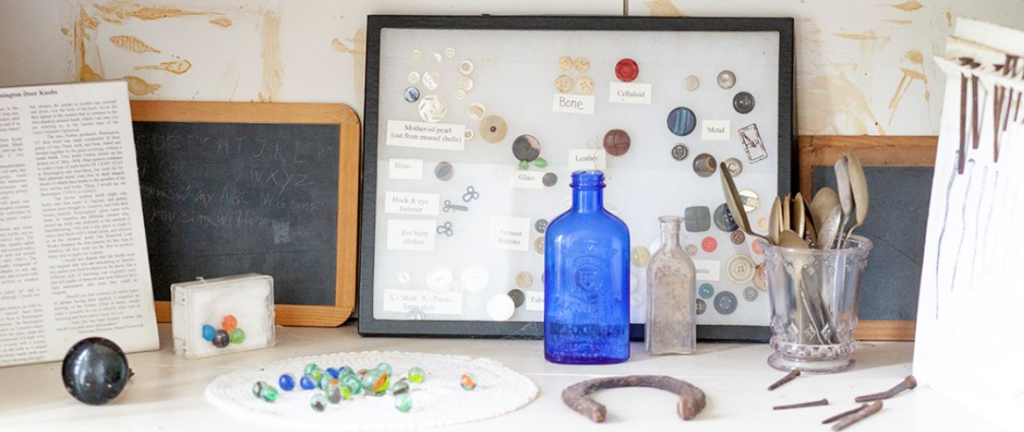
When the house was moved to the new location, an archeological dig was completed. The items found during the dig give us a glimpse into the lifestyles of this period. Displayed are some of the items found such as buttons made from various materials, eating utensils, handmade nails, marbles, a glass door knob, and handmade nails.
